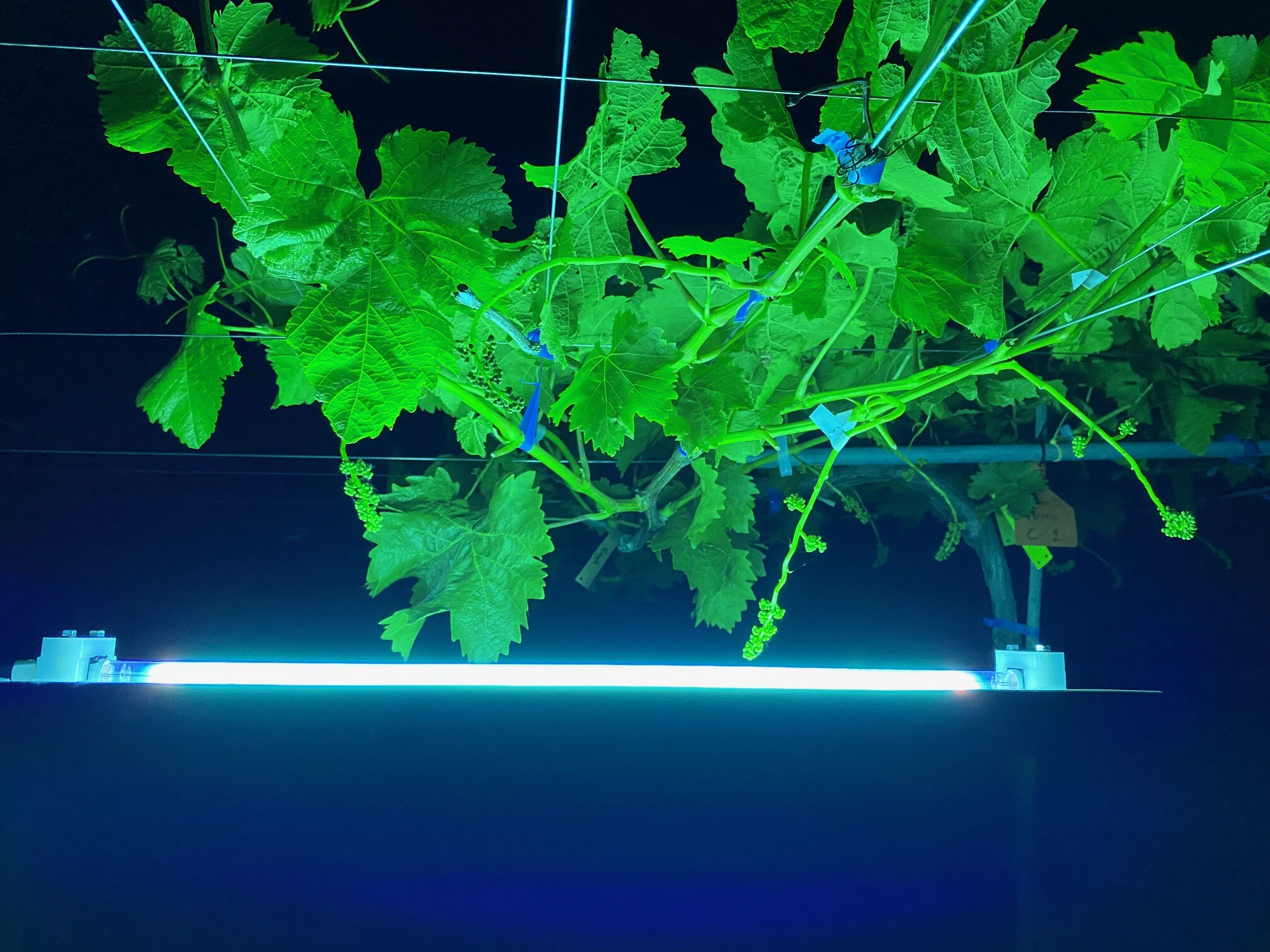News
UV-C tech sheds light on grape sustainability

Sustainably managing powdery mildew on grape vines has taken another step forward, with Hawke’s Bay company Greencollar NZ collaborating with Agri Automation to trial an ultraviolet light prototype unit on its table-grape vineyard.
Powdery mildew is one of the most vexing problems for grape growers. The fungal pathogen attacks grape vines, growing on young, green tissue, including leaves, shoots and, critically, the developing grape berries. Untreated, it can stunt berry development and cause skin discolouring.
While promising UV-C technology trials are well under way in the wine grape industry across New Zealand and Australia, applying the innovation to table grapes is a first.
Treating table grapes adds critical complexity, given the potential for the UV to give the berries “sunburn”. Unlike wine grapes, where minor imperfections can be acceptable, table grapes must be perfect to meet market expectations.
At Greencollar NZ, taking up the challenge to find a sustainable solution for this problem “aligns perfectly” with the company’s commitment to environmental stewardship and sustainable innovation.
“This trial represents a significant step in our journey towards more sustainable farming practices,” Greencollar chief executive Shin Koizumi said. “UV-C technology could be transformative for table grape production.”
Agri Automation is a precision agricultural and robotics company focused on developing innovative technology for farmers and orchardists. It has UV-C unit trials running on wine grapes in Marlborough, and is turning its attention to other applications – table grapes.
While the wine grape trials are using automated units, with table grapes “we’re not there yet”, Agri Automation managing director Chris Clifford said.
“While technically it is the same fruit, the precision we need for table grapes is much greater. The trial rig we use at Greencollar will help us gather the data we need for proof of concept to move on to the next iteration – automation.”
The Greencollar trial uses a manual prototype – quite a commitment by the company because it requires the team to move it around the vines at night, when research shows the fungi are most vulnerable to UV-induced DNA damage.
“The biggest challenge with UV-C technology is the night-time application requirement,” Clifford said. “Long-term, that’s not cost effective or practical for an operation of any size if you’re relying on manual operation. Our goal is to make this technology practically feasible through automation.”
As the trial progresses, Greencollar is monitoring disease control efficacy and aesthetic impacts on the fruit.
“This technology represents the kind of innovation we need in modern agriculture,” Koizumi said.





